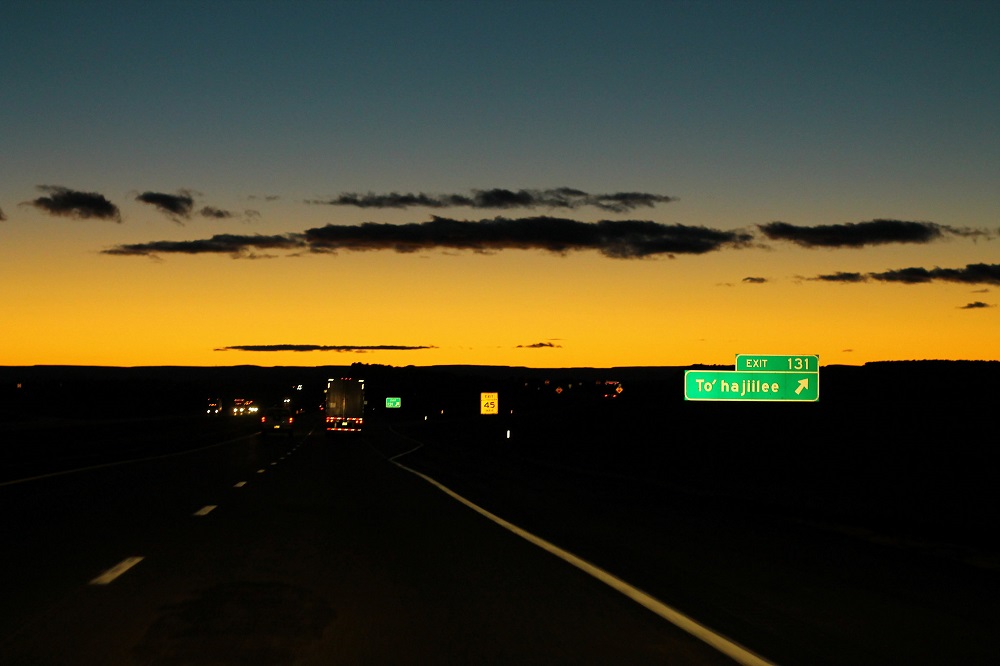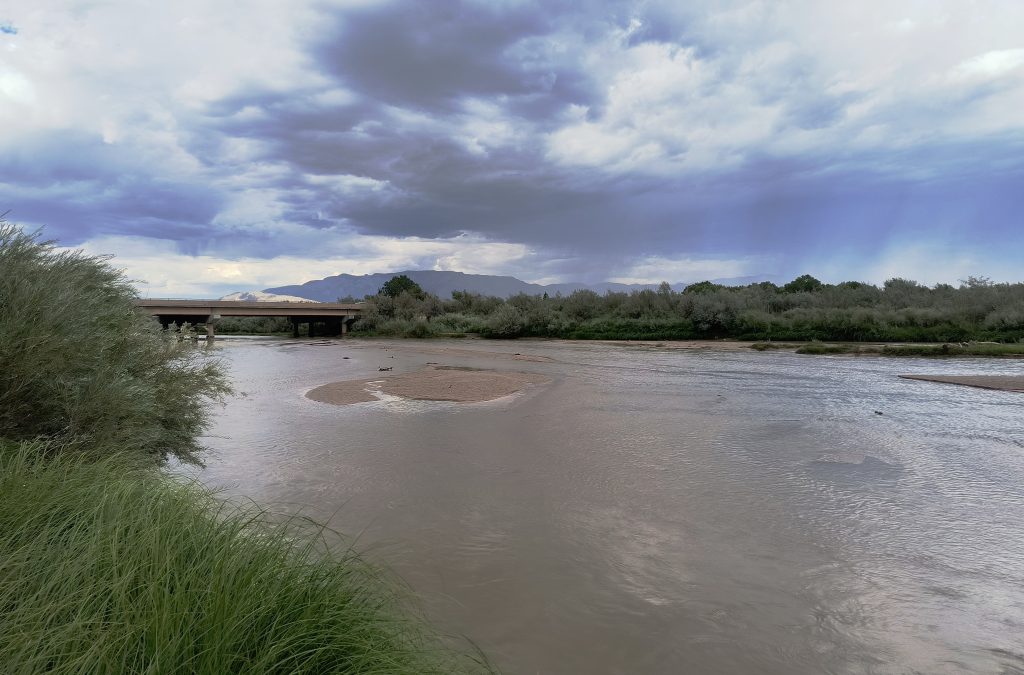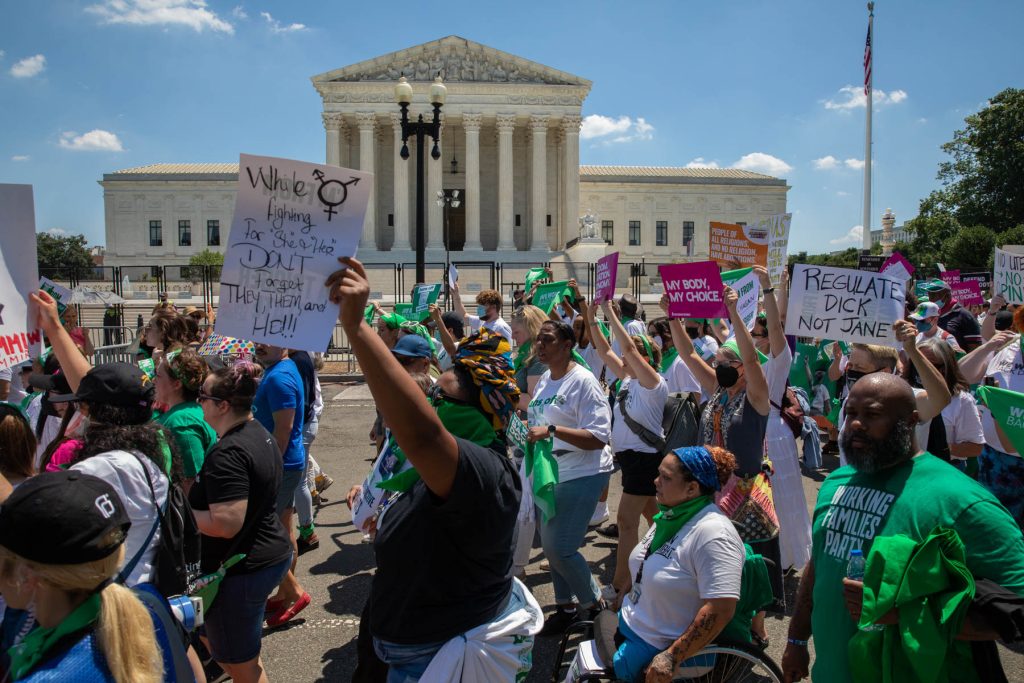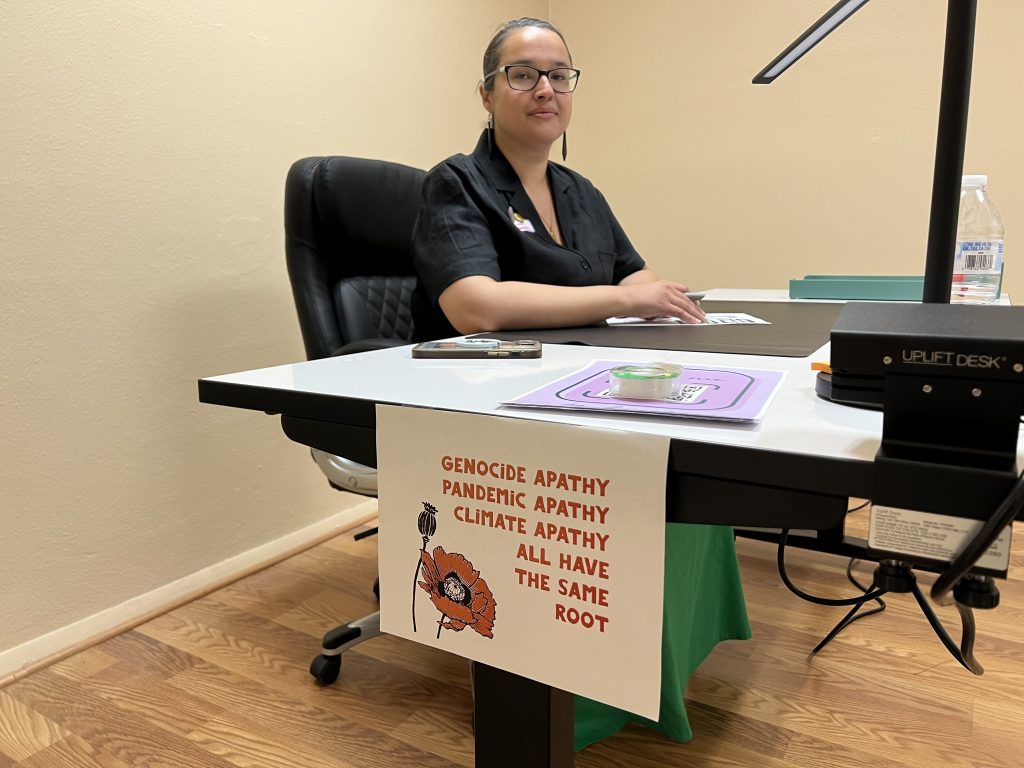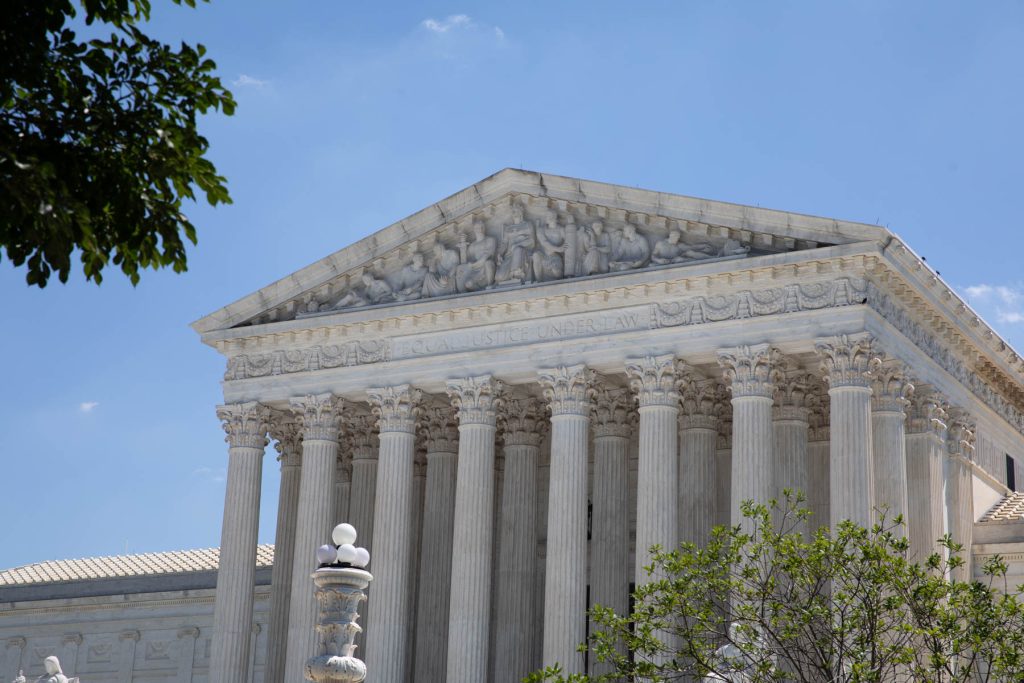Indigenous community leaders and activists held a virtual information session on Indigenous People’s Day to bring awareness to a water crisis in To’Hajiilee, a Diné community 20 miles west of Albuquerque.
The community of roughly 2,500 is currently relying on just one supply well, which pumps water up from the Rio Puerco aquifer. The water levels in the aquifer have dropped in recent decades, and what water that’s left is filled with corrosive dissolved solids that eat through the pump equipment and wreak havoc on the indoor plumbing systems of the residents in To’Hajiilee.
The Navajo Nation owns rights to surface water that could be piped into To’Hajiilee and serve the community. To’Hajiilee and the Albuquerque Bernalillo County Water Utility Authority (ABCWUA) have already devised a project plan to build a pipeline that would transport the water from a holding tank in the county’s far western boundaries to To’Hajiilee.
But plans to access and transport that water are being thwarted by a development firm that hasn’t agreed to sell a two-mile easement for the pipeline.
RELATED: A ‘humanitarian crisis’: To’Hajiilee’s aquifer is running out of water
“I thought today would be a really, really important day and an important message to share in front of my children that we are important, we are here, we need to be seen, we need to be heard and what better day to do it than on Indigenous People’s Day,” said Renee Chaco Aragon, a resident of To’Hajiilee and mother of ten. “We need people that are willing to listen, take time out of their lives and out of their day, to help us in our crisis.”
It’s not uncommon for the community’s single supply well to go down, Aragon said, disrupting daily life for everyone in the community.
“It is a very nerve-wracking thing to deal with on a day to day basis. We’ve had water crisis after water crisis here,” she said. “The entire community is affected by this, it is not something small, it’s huge. There’s babies here, there’s teenagers here, there’s elderly here, we have a whole community. We have a community school here. When the water well breaks down, the kids don’t go to school, there’s no education for them.”
“It’s our water and I think that we need to be able to utilize what’s ours. It’s a God-given right that we are given this water by God and no man should be standing in the way, saying what we can and can’t have to preserve our life, our community, our families, our children,” she said.
The community has been looking for an alternate water source since 2006, but didn’t have the funds necessary to build a pipeline to ABCWUA’s water system. Two years ago, development company Western Albuquerque Land Holdings (WALH) completed a $30 million water holding tank at the far western edge of ABCWUA’s system, to supply water to the planned Santolina community WALH has proposed in Albuquerque’s West Mesa area. The proposed pipeline to bring water to To’Hajiilee would cross a handful of privately-owned property lots, including a two mile stretch of land owned by WALH, where the water tank is located.
WALH has refused to sell the easement required for the pipeline, while negotiations between To’Hajiilee Chapter President Mark Begay and WALH representatives stalled just as soon as they started. Meanwhile, Bernalillo County Commissioner Debbie O’Malley said the County Commission voted in August to proceed with condemnation of the property if necessary in order to provide To’Hajiilee access to the easement needed to complete the pipeline.
Ahtza Chavez, executive director of the NAVA Education Project and NM Native Vote, called on the Bernalillo County Commissioners to move forward with condemnation.
“As an organization, we are asking that the [Bernalillo County] Commission move as quickly as they can to condemn the land needed for easements,” Chavez said. “We understand that they have already been moving in this direction, but we need them to act quickly.”
“No one should have to worry about having clean water in their communities. If we believe that water is life, then we must act as a community to do everything we can to help our neighbors in To’Hajiilee.”
Laurie Weahkee, an organizer with the group Friends of To’Hajiilee, said the funding for the project needs to be spent by the end of the year. She directed attendees to call the county commissioners and ask them to support To’Hajiilee, and also asked attendees to sign a petition.
“The Navajo Nation has already set aside some money to make sure that this project can be paid for. But it’s money through the CARES Act, which means they have to spend it by the end of this year,” she said. “So time is of the essence.”

